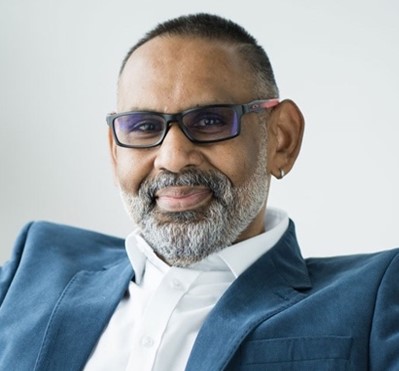
Introduction
Despite Malaysia’s push for multiculturalism, as demonstrated by its 1999 adoption of the slogan “Malaysia Truly Asia”, members of religious minorities are struggling to reconcile this idealised narrative with their lived experience.
According to the 2020 International Religious Report, while Islam is the state religion, all religions are welcomed to worship peacefully. Malaysia is a multi-religious nation with a population made up from 60% Muslim, 20% Buddhist, 9% Christian, 6% Hindu and 1% other.
While unity is a paramount concept in Malaysia’s nation, obstacles for religious minorities abound, particularly when their faiths conflict with state-sanctioned beliefs. This may have led to the manifestation of psychological burden that impacts the wellbeing of these communities.
On a larger scale, a more traditional perspective on religion may also result in the inability to acknowledge the existence of mental illness or disturbances, leading to the preservation of stigmatisation of anything linked to the concept of mental health in Malaysia.
This piece explores the complex intersection of religious intolerance and mental health in Malaysia, highlighting the psychological impact on religious minorities and the stigma surrounding mental illness. It calls for a mindset shift and interfaith dialogues to foster a more inclusive, compassionate society.
The Psychological Impact of Religious Intolerance
The deprivation or restriction on religious freedom has a deep impact on the mental health of individuals, as it is associated with a great sense of identity and belongingness in society. The resulting moderate suffering may usually manifest in mild symptoms, but extreme suffering could lead to a lot of anxiety, melancholy, existential crises and lower self-esteem. Concealed beliefs could also lead to trauma.
State protection of religious liberty could avert these as it minimises the risk of sectarian strife and mistreatment of minority groups within communities. While Malaysia’s legislative frameworks do signal a commitment to religious pluralism on paper, institutional biases act as significant obstacles towards achieving these goals in practice.
As an outcome, religious minorities in Malaysia are frequently left out of the national narratives and have difficulties in attaining acceptance and recognition.
Traditional examples include the controversy surrounding the use of the word “Allah” and the issue of conversion, which has become an unfathomably complex process leading to drawn-out court battles and mandatory counselling. The latter has also prompted some who consider converting to seek religious freedom in a different vein.
Religious Liberty and Societal Marginalisation
Stigma is a major barrier to seeking treatment for mental health disorders in Malaysia. The term stigma comes from the notion that certain scenarios or afflictions cause someone to fall outside of what is considered the society’s norm.
Though Malaysia is home to many world-class mental health facilities, many individuals are too afraid to go for help because they fear being shunned by family, friends and the community. These fears cause self-stigma and social isolation that deter people from asking for help. To illustrate, 80% of Malaysians had refrained from seeking help previously due to fear of judgement or stigma.
Certain interpretations of religious tenets could result in stigmatisation as well. For example, some religious communities continue to ascribe mental health issues to demonic possession or divine retribution. At other times, mental health problems could also be perceived by the same communities as shameful and as evidence of moral failure, thus perpetuating the stigma of mental illness.
This perception that considers mental illness a weakness of faith and the spirit – not a medical condition that needs intervention – introduces sense of guilt and culpability in the hearts of those who suffer from mental illness. Many who live with mental illness claim that they conceal their condition to protect their families’ honour, their own dignity and communal acceptance.
Religious hegemony could also force individuals with beliefs and belief systems outside the determined parameters to conceal them. In Malaysia, where Islam is the state-sanctioned religion, mental health issues are often buried and hidden to protect the family honour and ensure that social acceptance is maintained. This is a hurdle for both Muslims and other religious communities to achieve the aforementioned national unity.
To be fair, this problem does not only manifest among Malaysia’s Muslim community. Within the Hindu community, those who are actively preaching religious beliefs are more prone to stigmatisation, because they are judged more harshly than others. This is because the “public practice” of religiosity (e.g., social participation in religious practices, events or rites) may act as both a buffer/protector and a potential marker of stigma (e.g. social status or prejudice).
Moreover, while mindfulness is prioritised in Buddhism, the need to conform to religious conventions may also increase stigma. A sense of belongingness to a compassionate and supportive religious community can foster empowerment and emotional resilience within an individual. However, the pressure of not meeting community expectations can intensify the stigma around mental health issues. Those struggling may feel compelled to hide the reality of their challenge out of fear of criticism or rejection from their faith community.
Such patterns of mental health stigma exist across a variety of religious communities. There is, therefore, the need for leaders of faith to be compassionate in order to make people feel safe to seek help.
The Need for Change
As a potential remedy, there ought to be limits on the use of religiosity in labelling and stereotyping that could lead to prejudice and other forms of mental health stigma. Over time, the conceptualisation of religious beliefs within mental health stigma creates a barrier that hampers the efforts to reduce the latter.
The role of religiosity is twofold—it can either serve as an aggravating factor or be a source of healing, depending on how communities define and approach religious teachings.
Studies show that religiosity might have a negative relationship with mental health stigma. Other research suggests that for those who practice their beliefs in accordance with their faith’s ideals, religiosity can serve as a protective factor, improving global mental health and wellness.
Such a shift helps prioritise compassion over punishment in helping to reduce stigma and foster a more empathetic perspective towards those experiencing psychological distress. It is also reflective of the growing awareness within the nation towards mental health issues as a societal issue rather than individualised struggles.
Religious leaders also have important roles in determining how their faith communities understand mental health. Through their platform, they could either encourage acceptance or endorse stigma. Those that espouse the virtues of compassion, empathy and support for people with mental illness can definitely help reduce stigma and elevate acceptance.
Interfaith Dialogue as a Tool
One of the most important factors in building a mentally healthy and resilient nation is the advancement towards covenantal pluralism. This emphasises the fostering of an inclusive society rooted in interfaith understanding. It could only be achieved through the cultivation of religious tolerance and gaining knowledge of other faiths to prevent misconceptions stemmed from ignorance.
Historical and current examples from countries such as Myanmar, Sri Lanka, China, Indonesia and India – as well as the long-standing conflict between Palestine and Israel – show how unchecked religious intolerance and deep-seated prejudice ultimately lead to violence and systemic oppression.
These incidents highlight the urgent need to address religious intolerance before it incites conflict and violence within the society. To bridge the divide created by religious divisions, interfaith initiatives and education programmes are vital.
In certain regions, Rukun Tetangga (Neighbourhood Watch) programme has been introduced to promote interfaith alliances by creating a sense of togetherness and empathy amongst neighbours of varying religions and ethnicities. While it shows some promise as a grassroots tool for reducing divisions, its effectiveness remains inconsistent as it relies heavily on local leadership and community willingness to engage.
Civil society initiatives to promote interfaith discussions have been led by the Malaysian Consultative Council of Buddhism, Christianity, Hinduism, Sikhism and Taoism (MCCBCHST), which has been instrumental in promoting interfaith dialogue and religious harmony. It aims to grow mutual understanding and tolerance among different religious communities. These efforts respect the rights of all individuals while encouraging greater inclusivity and acceptance.
By reducing conflicts and promoting a sense of shared empathy, MCCBCHST’s initiatives contribute to broader societal shifts toward more supportive attitudes. These dialogues lay the foundation for future advocacy, helping to create an environment that could lead to greater support with compassion and an inclusive approach.
Conclusion
Mental health in Malaysia is often viewed through the lens of religious norms, continuing to shape the experiences of those struggling with mental health issues and religious minorities. As the nation continues to progress and awareness of mental health grows, greater attention must be given to fostering unity within the communities. This moment calls not only for acknowledgment of these challenges but also for active efforts to address them. The legal decriminalisation of suicide attempts marks a significant step forward in reducing stigma. However, it must come hand in hand with the promotion of inclusivity and understanding across religious communities. Interfaith dialogue will be pivotal in fostering a society where mental health is treated with respect and compassion.
